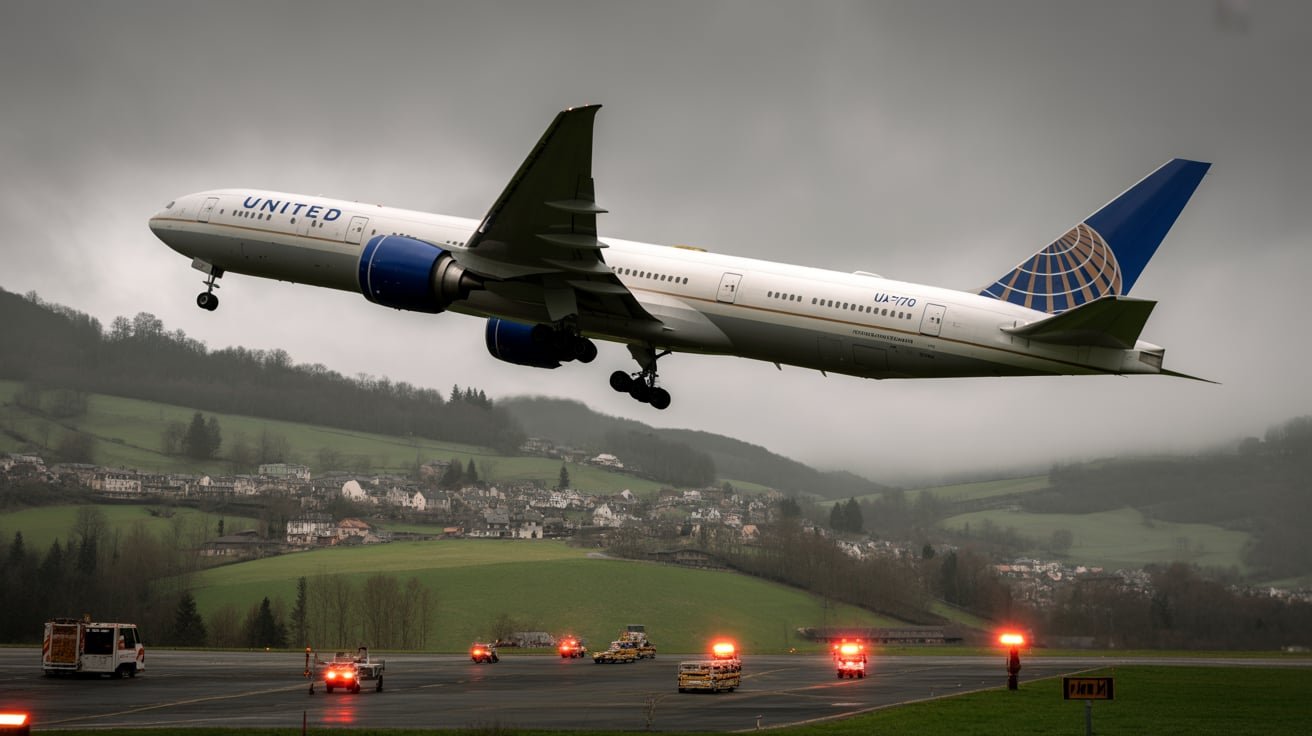When the unexpected occurs at 35,000 feet, aviation teams spring into action. That’s exactly what happened with United Airlines Flight UA770, diving into headlines in mid-August after a sudden emergency diversion transformed what was meant to be a routine journey into a dramatic but safely handled situation. Let’s unpack the full story — from triggers to takeaways, and what passengers—and industry—can learn.
H2: What Led to the UA770 Emergency Diversion?

H3: Pressurization Alert Puts Safety First
United Airlines Flight UA770, flying aboard a Boeing 787-9 Dreamliner, was mid-Atlantic when sensors detected a possible cabin pressurization issue. Cabin pressure is critical at cruising altitudes, and even a minor alert demands immediate attention. The crew responded with a squawk 7700, signaling an emergency to air traffic control and nearby aircraft.
H3: Safe Diversion Choice — London Heathrow
Pilots diverted to London Heathrow Airport, chosen for its proximity, robust emergency infrastructure, and United’s on-ground support.
H2: Event Highlights — A Closer Look
H3: Timeline of Key Moments
- May 27, 2025: UA770 departs from Barcelona to Chicago
- Mid-flight, at cruising altitude (~37,000 ft), a pressurization warning surfaces.
- Crew declares emergency (Squawk 7700) and reroutes to Heathrow.
- The aircraft lands safely on Runway 27R at approximately 4:55 PM BST, directed to Gate B44 for inspection
- H3: Aftermath & Passenger Care
- Passengers experienced anxiety, but the calm professionalism of the crew fostered trust. No oxygen masks were deployed — a sign the issue stayed within manageable boundaries
- Upon landing, support staff handled rebooking, accommodations, and meal vouchers for disrupted travelers.
H3: Operational Ripples
The diversion affected more than just UA770:
- Nearby flights were rerouted or delayed; airport operations scrambled to adapt.
- United Airlines issued statements highlighting crew professionalism and committed to continued passenger welfare..
H2: Information Table — UA770 at a Glance

| Detail | Information |
| Flight Number | UA770 |
| Aircraft Type | Boeing 787-9 Dreamliner |
| Date of Incident | May 27, 2025 |
| Route | Barcelona (BCN) to Chicago (ORD) |
| Trigger | Cabin pressurization system warning |
| Emergency Code | Squawk 7700 (general airborne emergency) |
| Diversion Airport | London Heathrow (LHR) |
| Landing Runway | Runway 27R — Gate B44 |
| Passenger Impact | Anxiety, but no injuries; rebooking, lodging, meals provided |
| Operational Effects | Flight delays, re-routing, increased airport activity |
Also Read:onetech1
H2: Why This Incident Matters

H3: Safety Protocols Worked Exactly as Designed
This diversion isn’t about failure. It reflects aviation at its best: early detection, swift decisions, and passenger well-being centered above all.
H3: Crisis Communication Counts
Crew maintained a calm cabin with clear updates, reducing panic and protecting mental well-being. Their tone made a stressful situation manageable.
H3: Trust Is Continued Through Preparedness
Diversions like UA770 reinforce confidence in air travel. That the crew and systems held strong offers reassurance to passengers and the public.
H3: Social Media Accelerates Reality
This time, unlike older diversions, passengers broadcasted updates real-time — a reminder that modern communication challenges airlines to be both fast and accurate.
H2: FAQs — Quick Answers for Curious Readers
(Optimized for featured snippets with bullet points and concise responses)
Q: Why did UA770 divert mid-flight?
- A pressurization system warning triggered a safety-first diversion.
Q: Where did UA770 land?
- The flight diverted to London Heathrow Airport (LHR) and landed safely on Runway 27R.
Q: Were there injuries onboard?
- No. Crew handled the situation calmly, ensuring all passengers disembarked safely.
Q: Were passengers supported after the diversion?
- Yes. United provided rebooking, hotel stays, and meal vouchers.
Q: Is squawk 7700 serious?
- It’s the universal aviation emergency code — critical for securing priority landing and ground response.
Q: Do such diversions happen often?
- No, they’re rare—but they are signs of safety systems functioning correctly, not failure.
H2: Final Thoughts — Aviation Safety in Action
United Flight UA770’s emergency diversion reminds us why modern air travel remains one of the safest transportation modes in existence. With early detection, skilled human judgment, and solid infrastructure, what could have become a crisis instead became a demonstration of professionalism under pressure. UA770 may have shifted course, but it flew safely — and left passengers with a renewed sense of safety and trust.



Leave a Reply